Vascular Conditions
Dr Halfhide has a vast amount of experience in treating redness caused by acne rosacea, facial and Leg thread veins, sun damage, and all vascular facial lesions.
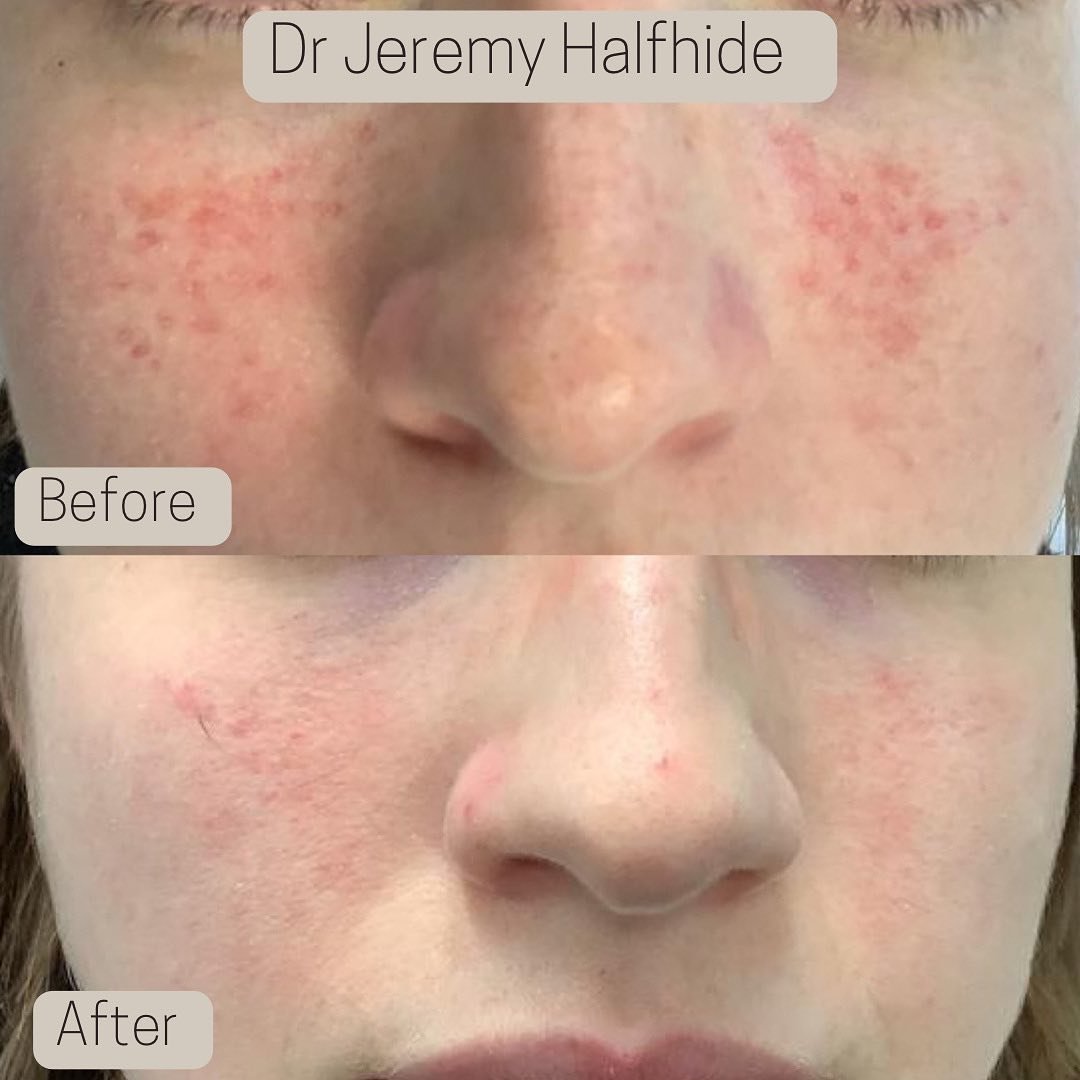
Rosacea - improved with laser treatment.
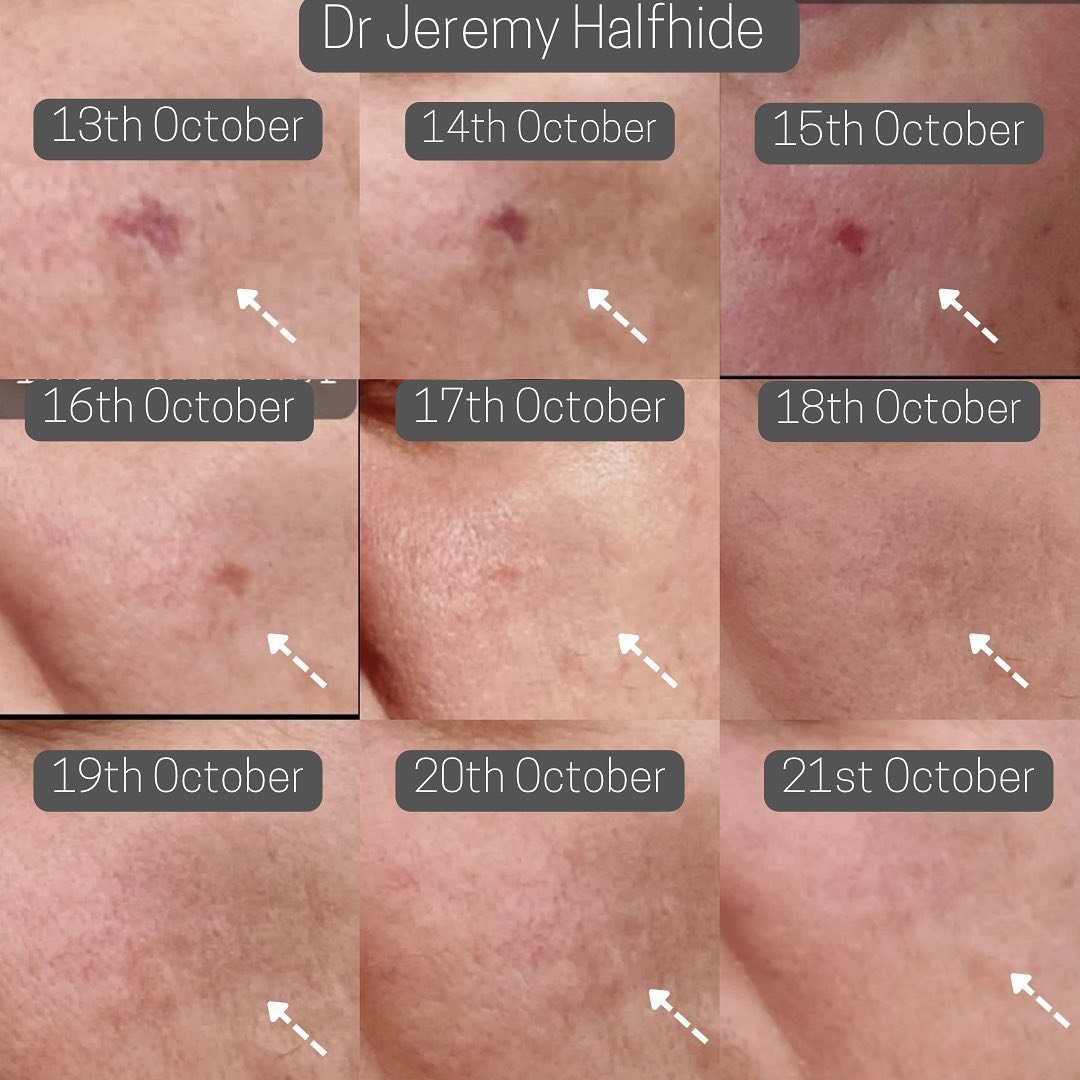
Laser (healing example - patients photos*)
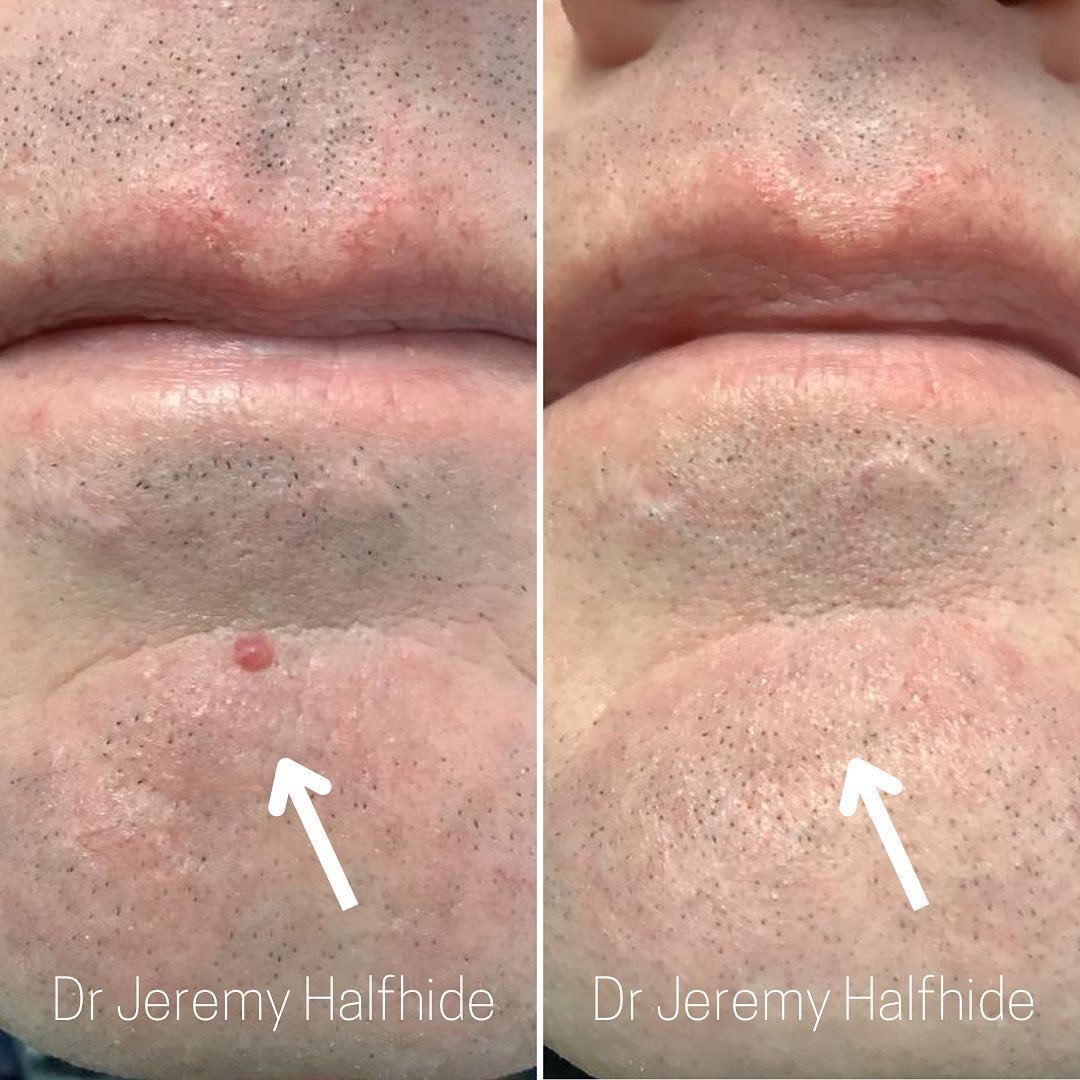
Vascular Lesion removal

Multiple vascular lesion removal
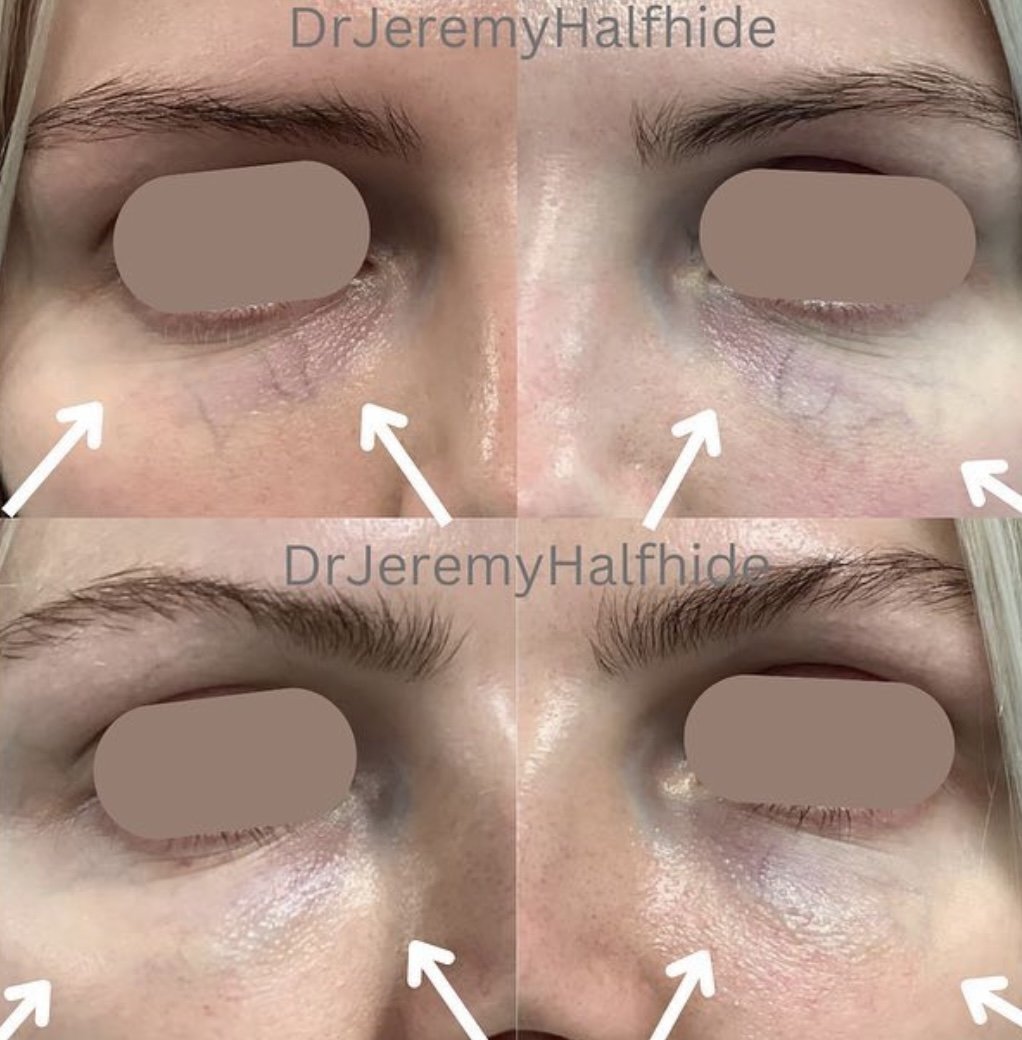
Patient concern: Visible blue veins under the eye.
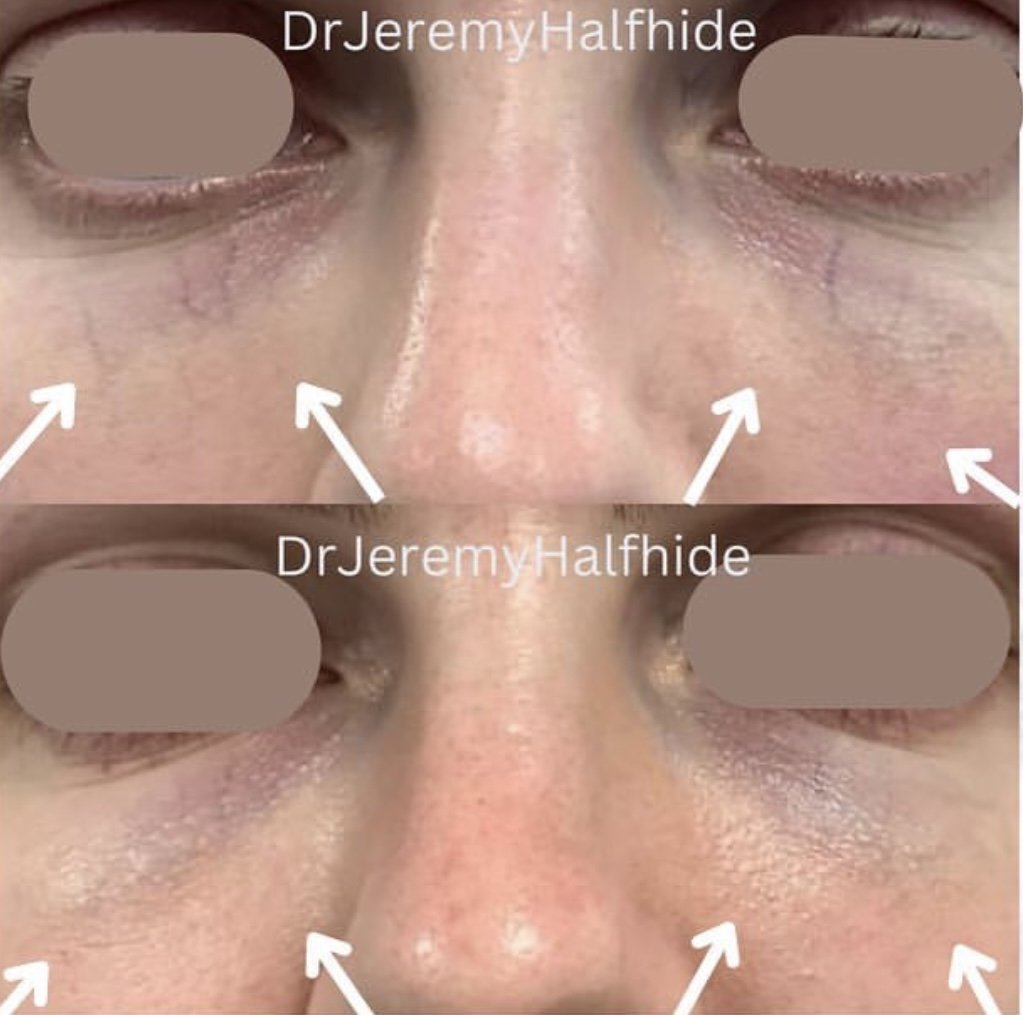
Patient concern: Visible blue veins under the eye. Just 3 sessions to achieve this result.
Rosacea
What is Rosacea?
Rosacea is common typically occurring between 30 and 60 years old, in fairer skin types and occasionally in darker skin types too, presenting as facial redness often with spots.
Frequently asked questions
What causes rosacea?
Fair skin is most susceptible; long term sun exposure is the key cause.
Sunscreens
Most importantly use effective sunscreens (see below for recommendations) regularly. In the UK the often heard and incorrect comment passed to people sporting a sun tan is “Oh you look well”. Dermatologically speaking nothing could be further from the truth! Tanned skin is damaged skin: tanning is the skin’s attempt to reduce the damage that ultraviolet (uv) radiation causes. And it should rightly be regarded as radiation, not only responsible for rosacea but also ageing of the skin and skin cancers caused by direct DNA damage.
Ultraviolet A (uvA) (320–400 nm) makes up 95% of the UV radiation arriving at the earth’s surface. UVA leads to photoaging, hyperpigmentation, and may contribute to the development of skin cancer.
Ultraviolet B (uvB) (280–320 nm) UVB makes up the other 5% of UV radiation reaching Earth causing sunburn, skin cancers, and hyperpigmentation.
Ultraviolet C (uvC) (100–280 nm) in sunlight is filtered out by the earth's ozone layer and does not reach us.
In the UK most people talk about only SPF numbers, for instance “I wear factor 30” without realising this is a measure of protection against just uvB. We must also protect just as carefully against uvA radiation, often overlooked or not even stated on the bottle. If it is not mentioned on your bottle then assume your brand is not providing you with uvA protection. uvA protection is measured on a star (*) grading, 5* being the maximum. I recommend you buy sunscreen that is minimum SPF30 and 4*.
In addition to buying the correct sunscreen you must use it properly to get the full protection. In the UK properly means every day 365 days per year, rain or shine, twice or three times daily when outside in the summer (1st April to 1st October) or abroad, applied in generous quantity and repeated after swimming. A daily morning sunscreen will provide far greater anti-aging benefits than the more frequently used over the counter night time moisturisers.
In general
Avoid topical steroids which will exacerbate rosacea
Avoid exfoliants
Avoid alcohol-based topical products
What is the treatment for rosacea?
It is not curable, but it is very much controllable.
How does it present?
Complications
The main complications of untreated rosacea are:
enlargement of the nose with phymatous change
eye complications
increased anxiety, depression, low self-esteem, and social isolation
Lifestyle: avoid triggers
These vary from one person to another though some of the most common are spicy food, hot/cold temperatures (hot baths), exercise, sun exposure, and alcohol.
Vitamin D
Vitamin D deficiency is a concern for some with regular use of sunscreen, but this has been discounted by good quality well conducted scientific studies. If this remains a concern despite the evidence to the contrary, over the counter Vitamin D supplements can be safely and easily taken.
VSpecific Treatments
Transient Flushing
Topical treatments like brimonidine for short term relief (long term use may result in rebound flushing when stopped); Beta Blocker oral medication (with blood pressure monitoring)
Persistent Redness
For long term results (10 years+) and an expected reduction of 60-80% or more Dr Halfhide recommends the Pulsed Dye Laser
Before and after photos here
Spots
Topical creams or gels like azelaic acid, metronidazole, erythromycin, ivermectin; or oral medication like oxytetracycline, lymecycline, doxycycline, erythromycin, azithromycin, metronidazole, isotretinoin